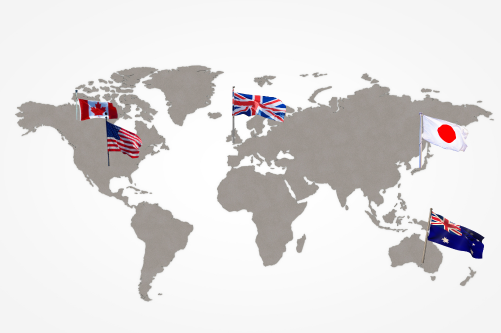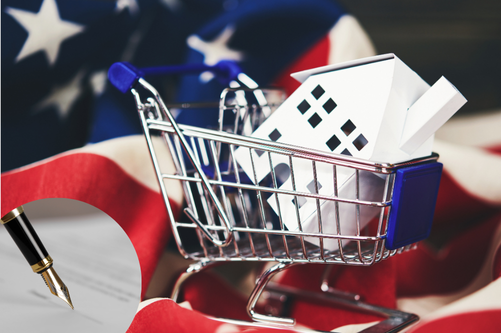What do Buy American and Buy America mean, why were they created and how do they differ?
If you have wondered about these laws which dictate certification requirements for material and products when government dollars are involved, let us try to clear up the confusion.
These two acts differ in the creation dates and scope. Let's start with the first one that was created, Buy American.
Buy American was created in 1933 and applies to Federal Government buys for its own use, and applications within the US borders (i.e., an overseas naval base would not be under this provision).
This law was primarily created in an attempt to restart the United States economy following the great depression.
This act is ruled by the Federal Acquisition Regulation (FAR). The domestic content threshold has had several decades of stability; however, it has been changing since 2022. The current regulations which were set in October 2002, put the threshold at 60%. In 2024, it will move to 65% and then in 2029, to 75%.
These thresholds are spelled out in the primary law under Buy American, which is the Buy American Act (BAA). (Not to be confused with BABA or BABAA – see the Buy America section below.)
Over the longevity of this law, many permanent waivers have been granted. These include waivers of Country of Origin (COO) and now forty-six countries enjoy a waiver status on federal procurements bids.
While there are several types of waivers, a few examples waivers include: Procurement Non-availability, procurement public interest and procurement urgent requirement reports.
The Procurement Non-Availability waivers makes businesses (manufacturers and small) aware of products & materials that are not available domestically (either in quality or quantity). The Made in America Office (MIAO) reviews these waivers for policy consistency as federal agencies approve them.
The Procurement Public Interest waivers apply to situations where domestic preference would be inconsistent with public interest. The MIAO reviews these waivers.
The Procurement Urgent Requirement Waiver Reports responds to requests for urgent contracting as a result of unforeseen and pressing circumstances.
Additional waivers can be found on the Made in America (.gov) website.
A qualifying country is a country that has reciprocal defense procurement memorandum of understanding or international agreement with the United States in which both countries agree to remove barriers to purchases of supplies produced in the other country or services performed by sources of the other country. Canada, Australia, United Kingdom, EU, and Japan are prime examples.
 Since the world looked much different in 1933 as compared to the complex supply chain of today’s modern world, many waivers have been created.
Since the world looked much different in 1933 as compared to the complex supply chain of today’s modern world, many waivers have been created.
The United States is a party to the World Trade Organization (WTO) Government Procurement Agreement (GPA), which gives American companies the right to bid on foreign government procurement opportunities in the forty-six other countries that belong in this agreement.
The United States made the agreements so that U.S. companies could bid on the estimate $4 trillion annual spend from these countries’ governments, whereas the annual U.S. government spend is around $488 billion.
State and local governments are not directly subject to Buy American; however, many have adopted similar requirements.
Buy America, or The Buy America Act, was created in 1982 as part of ‘The Surface Transportation Assistance Act' and applies to any financial assistance for infrastructure. This act extended preference requirements to purchases made by third parties (i.e. private contractors).
This expanded these requirements for public use projects, funded by government, and besides government buildings now includes public works such as highways, railways, public waterways, and airports.
There is no single Buy America statue, however in 2021 U.S. Congress created the most expansive statue and expanded the scope of this act under the Infrastructure Investment Jobs Act (IIJA) and created the BABAA or BABA (Build America, Buy America Act or Build America, Buy America for short). These acronyms are interchangeable.
The scope of BABBA now included transmission facilities, structures and equipment for electric utilities, broadband infrastructure, and EV technology, among others.
Compliance with this act is the responsibility of the government entity in charge of the project. For instance, FAA (Federal Aviation Administration) will oversee compliance for airport projects, FTA (Federal Transit Administration) will oversee buses, subways, and other mass transit programs, etc.
Make sure you understand the qualifications for the project and the agency in charge of making final decisions. For example, FEMA applies this law but may waive it during natural disasters.

Under BABA, items purchased for use must cover the following threshold requirements:
These requirements create a situation with fewer exceptions and tighter domestic controls.
State and local projects that use any federal funds at all also must fall into compliance with this regulation.
Both regulations share similar temporary waiver options on a project. These consist of:
Lists of waivers granted are accessible on U.S. federal government websites. The BABA waivers can be found on the websites of each government branch, such as the EPA and USDA.
Buy American applies to federal procurements for its own use valued at over $10,000 and requires that more than 60% (soon 65%) of the cost of all component parts is mined, produced, or manufactured in the U.S. This provision is monitored and governed by FAR exclusively.
Buy America applies to federally funded government projects for public works and infrastructure projects anywhere in the United States and requires 100% iron and steel U.S. domestic material, from the melt stage to final product.
This provision is monitored and governed by the government agency in charge of the project and the requirements to meet the standards may be slightly different.
Author: Dave Adamson, Merit Brass – Inside Sales Manager
Sources:
https://www.madeinamerica.gov/media/documents/buy-american-vs-buy-america-fact-sheet.pdf
https://www.gao.gov/products/105519
https://www.gao.gov/assets/105519.pdf
https://crsreports.congress.gov/product/pdf/IF/IF11989
2/7/2025 6:43:57 AM